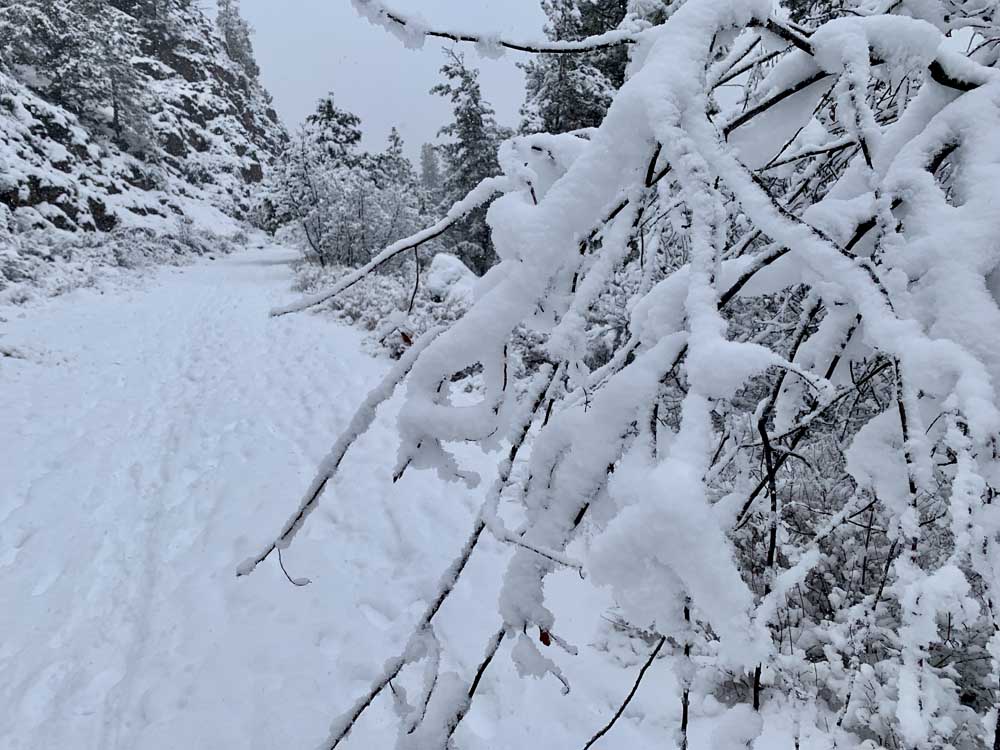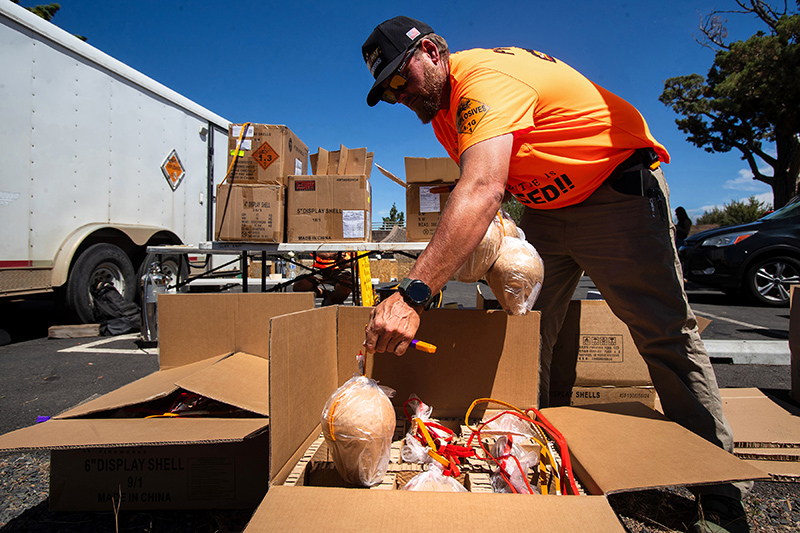Winter storms pack a punch, but Central Oregon snowpack, rainfall remain average
Published 2:00 pm Thursday, December 29, 2022

- Trees bow under the weight of the heavy, wet snow along the Deschutes River Trail.
Winter storms have hammered much of the Pacific Northwest this month with snow and freezing rain. But looking back at historical numbers, this year’s weather is just average for the region and not enough to declare an end to the three-year drought that has parched Central Oregon.
Irrigation districts, climatologists, wildlife biologists and others who watch water levels say multiple wet winters are needed to return reservoirs and rivers back to historic levels. So far this water year, which runs for 12 months starting Oct. 1, Central Oregon is showing just average levels of precipitation, well short of the deluge that many say is needed to fully escape the drought.
As of Thursday, snowpack in the Upper Deschutes and Crooked basin stood at 107% of normal, according to data compiled by the Natural Resources Conservation Service. In the world of hydrology that is considered within an average range. Precipitation for the water year was 86% of normal.
But there is still time to make up ground, officials say.
“I am keeping an optimistic outlook for this winter as we have lots of time remaining to build our mountain water supplies,” said Kyle Gorman, region manager for the Oregon Water Resources Department. “The next few days look favorable for making progress.” The recent heavy precipitation resulted in month-to-date totals that were barely above normal in some areas, and three-month totals were still below normal across most of the Pacific Northwest, according to a summary published by the U.S. Drought Monitor website.
Even though precipitation hasn’t been off-the-charts, there has been enough this year to tamp down the severity of the three-year-old drought, the worst in recorded history going back to the late 1800s.
Cumulative levels published by the U.S. Drought Monitor show that 56% of Deschutes County is in a “severe” or worse category of drought, significantly better compared to a year ago when 87% of the county fell into this range.
The U.S. Drought Monitor, updated weekly, is a partnership between the National Drought Mitigation Center at the University of Nebraska-Lincoln, the U.S. Department of Agriculture, and the National Oceanic and Atmospheric Administration.
The agencies issue a map with four levels of drought ranging from moderate to exceptional. About 32% of Deschutes County has been reduced to a level known as an “abnormally dry” condition. A year ago, nearly half the county was mired in the most extreme level of drought. At the time, glaciers were disappearing at a rapid rate and snowpack was fading fast as extreme heat waves took a toll on the region.
The outlook in Jefferson County has also improved — 63% of that county is in the severe or worse categories of drought compared to a year ago when it was 87%. Crook County is still 100% under the severe or worse categories of drought. But there is good news for the county as it’s no longer fully under exceptional drought.
Drought levels have fallen across the Western U.S. from a peak in 2021. Currently, 64% of the Western U.S. is experiencing some type of drought. A year ago at this time, that figure was over 90%, according to the Drought Monitor website.
Long-term process
In Central Oregon, escaping drought can be a long-term process. The volcanic region absorbs water and requires significant rainfall or snowmelt before it can effectively release water into springs that feed rivers and lakes at lower elevations.
Only when the aquifer is charged can it percolate up again through springs to fill reservoirs, a process that usually shows results the following year. In other parts of Oregon, precipitation isn’t absorbed to the same degree and instead will run off the ground directly into rivers and lakes.
Snowpack in the Upper Deschutes and Crooked basin was just 54% of normal at the end of March this year, which is likely to prevent Wickiup Reservoir from refilling again this year. But the rate of refill is higher compared to previous years.
Oregon state climatologist Larry O’Neill says a full recovery from the drought is not expected in Central Oregon, which means “continued challenges with irrigation and water supply similar to what we’ve experienced in the last three summers.”
Gorman explains that the natural flow in the upper Deschutes is a little higher in 2022 compared to last year. Water from the Crane Prairie Reservoir, which flows into Wickiup, is about 60 cfs higher than last year at this time, he said.
As of Thursday, Wickiup was 37% full, a level not reached until mid-January last winter. At this point, the reservoir is 15,000 acre-feet above where it was this time a year ago.
Mike Britton, executive manager for North Unit Irrigation District, believes that weather conditions so far have been favorable compared to prior years, but he adds that it’s too early to indicate what farmers will get next year in terms of water allotments.
“We’re optimistic these wet weather patterns we’re currently experiencing will provide a good soil moisture base going into the spring and provide much-needed replenishing of the regional water supplies,” Britton said. “Keep in mind it will take multiple good water years in order to bounce back the effects of the prolonged drought.”








